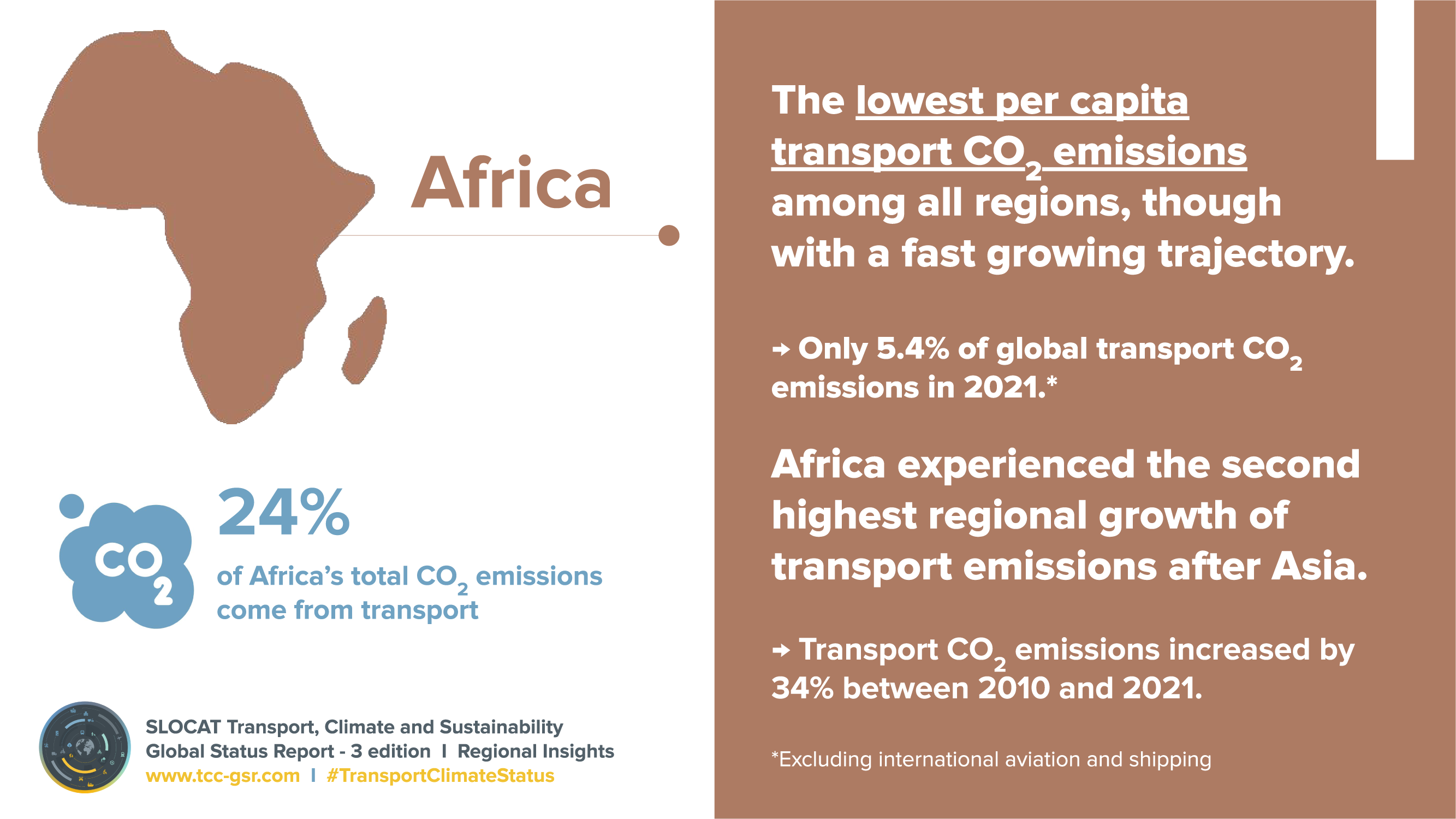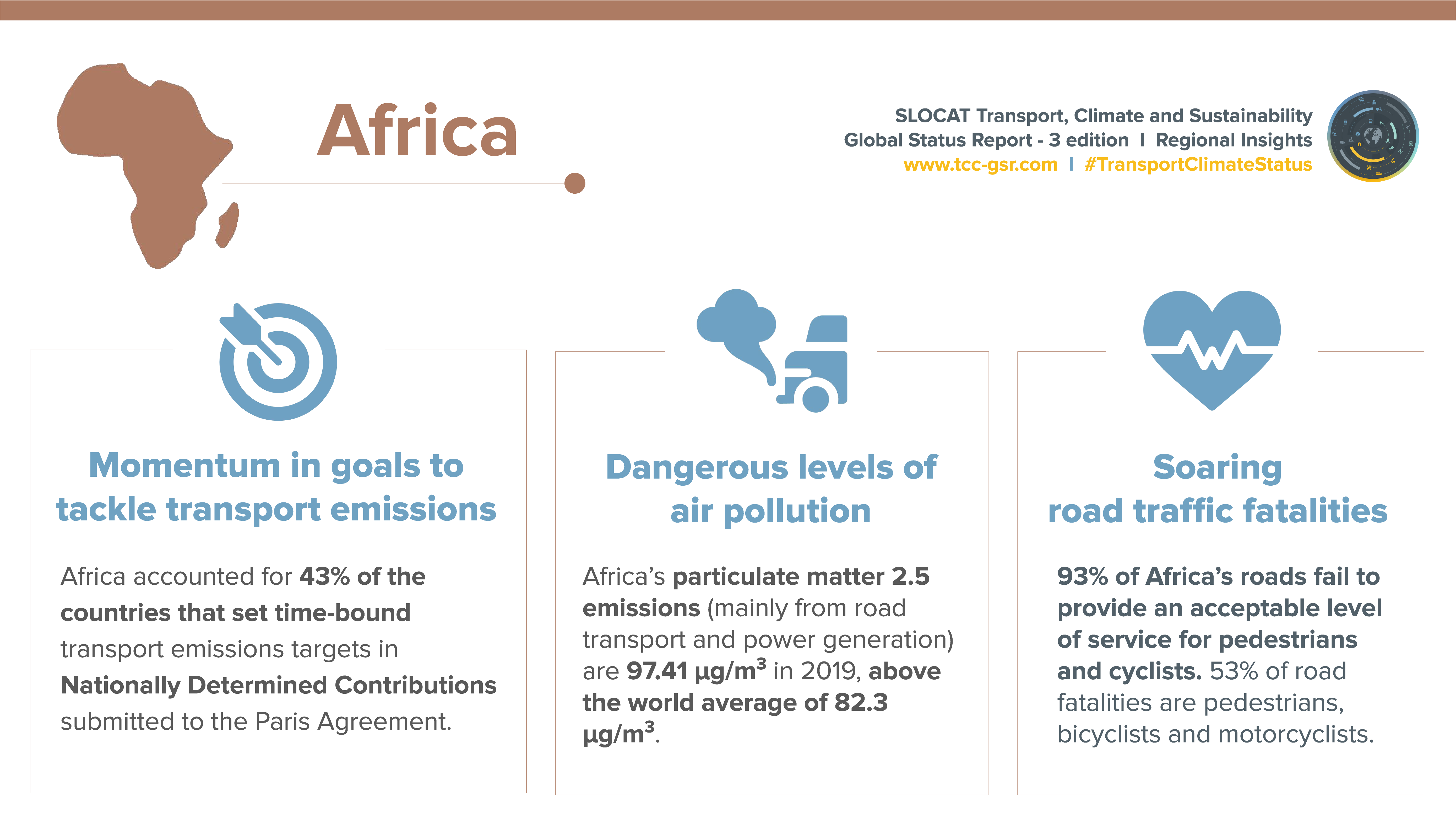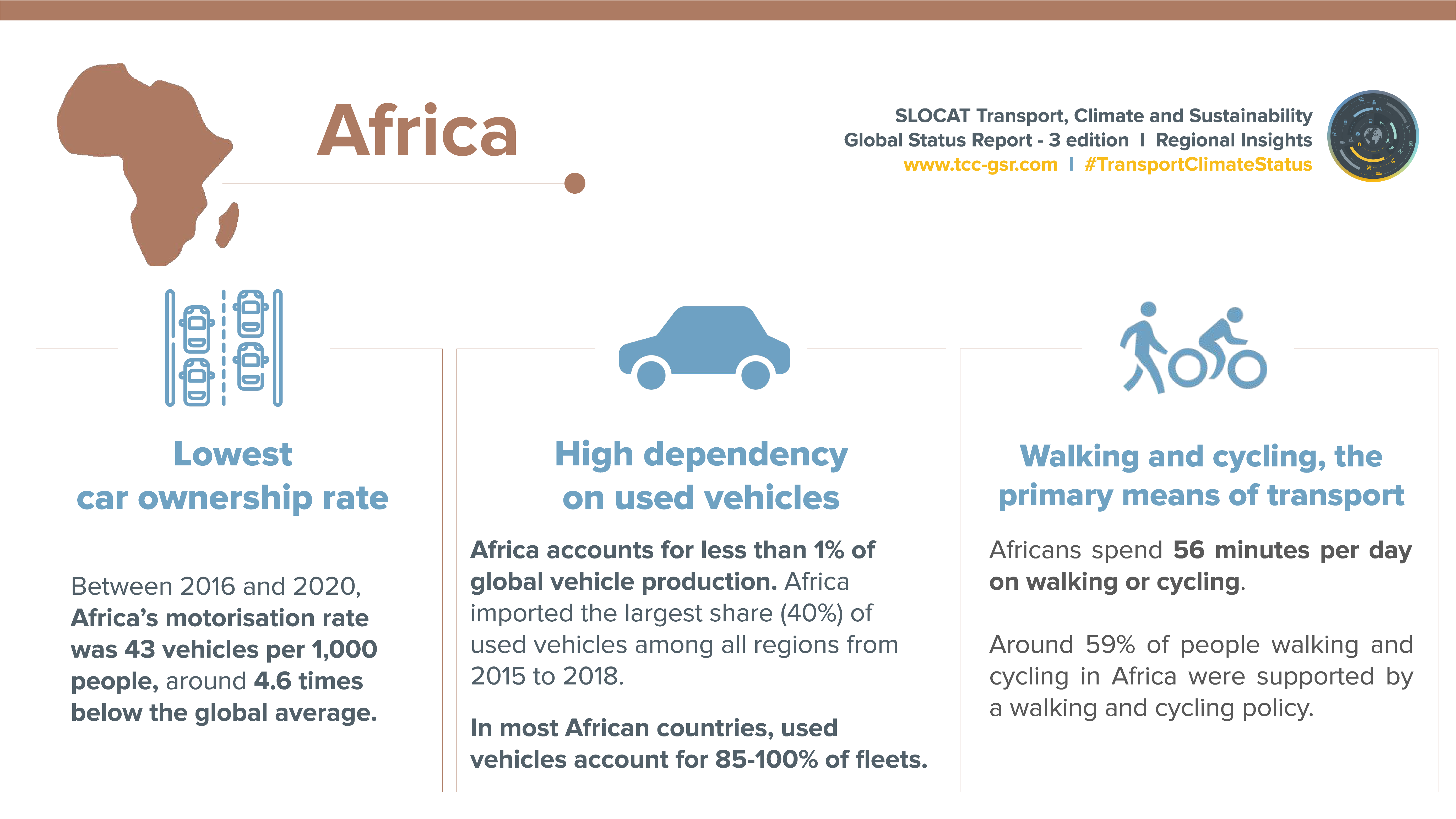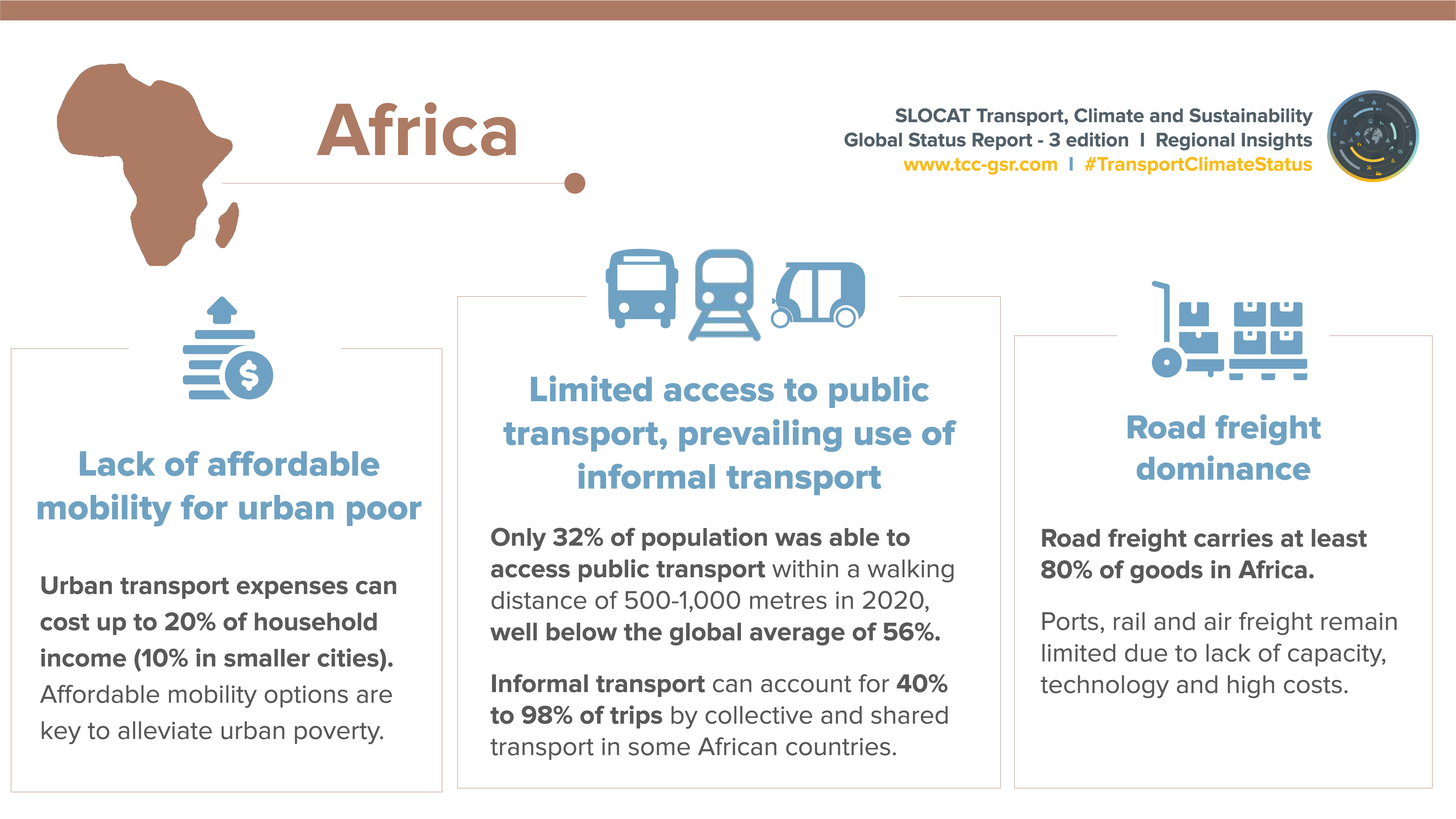-
 Africa Regional Overview
Africa Regional Overview
Population size
(2022)
Population growth
(2010-2020)
%
Urban population share
(2022)
%
Urban population
growth (2010-2022)
%
GDP per capita
(2021)
GDP growth
(2010-2021)
%
- Key Findings
Demand trends
- The motorisation rate in Africa (covering four-wheeled motorised vehicles) is the lowest globally, at 43 vehicles per 1,000 people during the 2016-2020 period, compared to a global average of 197 vehicles per 1,000 people.
- Africa accounts for less than 1% of global vehicle production and is highly dependent on used vehicles. In most African countries, used light-duty vehicles comprise 85-100% of the total fleet. Between 2015 and 2018, Africa imported the largest share of used light-duty vehicles among world regions, at 40%.
- In 2022, people in Africa spent an average of 56 minutes per day walking or cycling for transport, compared to the global average of 43.9 minutes per day. Low-income households are most dependent on walking and cycling, and their urban transport expenditures represent up to 20% of the household income (10% in smaller cities).
- As many as 95% of Africa’s roads fail to provide an acceptable level of service for pedestrians, and 93% fail to provide an acceptable level of service for cyclists; with 53% of the population considered “vulnerable” road users (pedestrians, bicyclists and motorcyclists). This share is 1.5 times above the global average of 26%.
- Access to public transport in Africa is limited. In 2020, only 31.7% of the population was able to access either formal or informal public transport within a walking distance of 500-1,000 metres, well below the global average of 56%.
-
At least 105 million people living in African cities did not have reliable information on their collective transport systems as of 2021. This makes it difficult to achieve target 11.2 of Sustainable Development Goal (SDG) 11, aimed at ensuring that all citizens have access to safe, affordable, accessible and sustainable transport systems by 2030. In various cities across the region, informal transport accounts for between 40% and 98% of trips by public or shared transport.
- Roads are the predominant mode of transport in Africa, carrying at least 80% of goods and around 90% of passengers. Limited rail transport and the high costs of air transport leave road transport as the only practicable alternative for freight in most countries in Sub-Saharan Africa.
Emission trends
- Africa contributed the lowest share of global greenhouse gas emissions (3.9%) among world regions in 2022, despite being home to 18% of the world’s population. At the same time, the region is most vulnerable to the effects of climate change and is already experiencing high temperature increases.
- Between 2020 and 2021, due to COVID-19 travel restrictions, Africa’s economy-wide CO2 emissions fell 7.4%, and transport CO2 emissions fell 11%.
- Transport contributed nearly one-quarter (24%) of total CO2 emissions in Africa in 2021. The region’s transport CO2 emissions increased 34% between 2010 and 2021, the second highest regional growth rate after Asia (36%).
- However, the region’s per capita transport CO2 emissions overall are 3.4 times below the global average of 0.85 tonnes per capita.
Policy developments
- The African Road Safety Action Plan, the region’s framework to implement the United Nations (UN) Road Safety Decade 2021-2030 and SDGs 3 and 11, recognises the dearth of road safety data in Africa and has requested the UN Economic Commission for Africa, the African Union Commission and the African Development Bank to develop mechanisms to strengthen data collection for effective policy intervention and analysis.
- In African cities, many residents depend on walking and cycling as their primary means of transport. As of 2019, around 59% of people walking and cycling in Africa were supported by a walking and cycling policy, either stand-alone or as part of an integrated transport strategy.
- To address challenges related to safety and the quality of service, initiatives have emerged to consolidate public transport operations.
- Bus rapid transit (BRT) corridors and/or systems have been implemented or are being developed in Addis Ababa (Ethiopia), Cairo (Egypt), Dar es Salaam (Tanzania), Lagos (Nigeria), Nairobi (Kenya) and the cities of Cape Town, George, Johannesburg and Pretoria in South Africa.
- The electric mobility landscape is evolving rapidly, pushed by the need to decarbonise economies by 2050. Several African governments have put in place policies and regulatory measures for the adoption and transition to e-mobility.
- Rapidly rising urbanisation and motorisation rates have prompted an urgent response to Africa’s growing transport needs, including through the development of sustainable urban mobility plans (SUMPs) and national urban mobility plans (NUMPs).
- As of the end of 2022, Africa accounted for 43% of the countries that included time-bound targets for reducing transport greenhouse gas emissions in their second-generation Nationally Determined Contributions (NDCs) under the Paris Agreement (10 out of 23 countries).
Author: Robert Ambunda, SLOCAT-VREF Young Leaders
Contributors: Verena Knoell, GIZ; Chris Kost, ITDP





